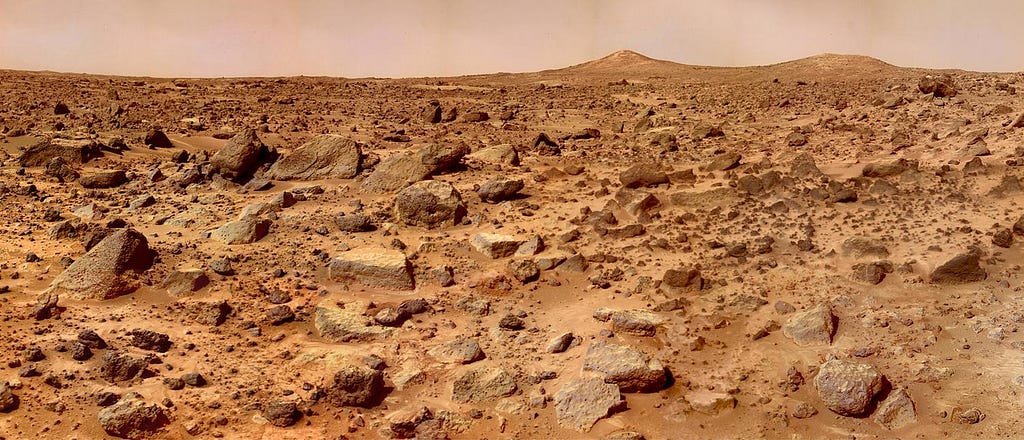
As space tourism and colonization become possible for certain segments of the global population, knowledge sharing and preservation, as well as institutional memory, become issues for extra-terrestrial spaces. This problem takes many forms: NASA has to design modules and interfaces that can be used by multiple generations of astronauts, for example. But what about books? As humans leave their planet, they will doubtless want to take at least some of their books with them. And while most of these books will need to be digital during the initial migration, physical books will have different requirements on different planets.
So. How do we print books on Mars?
Why Print Books?
The advent of the printing press changed the world as we know it. With printed books, both revolution and democracy could flourish, sometimes at the same time. Mass-production printed books allowed for a sudden blossoming of intellectual development, education, social cohesion, religious journeying, scientific documentation, and, of course, pornography. All of these elements are now considered part of creating a whole person. Humans may have created books, but books make humans. (That’s why it’s called “the humanities.’’)
Innovations in print and digital technologies have done little to change this essential fact. For example, despite vast market gains in the past five years, e-book sales are slipping and sales of printed books are up. And while film, television, and Internet media threatened to displace the book, books are still fertile ground for both adaptations and for talk-show content (on programs like The Daily Show and elsewhere). Clearly, humans still enjoy books as physical objects, and have yet to replace them entirely.
The primary reason for this, I would argue, is that printed books have the lowest barrier to entry. There’s a reason we read them to children: it’s easy for children to read along with us, because the physical motions of reading a book are simple even to people who lack fine motor control. Similarly, the design affordances necessary to making books more inclusive to all types of ability are easier to engineer in physical books or other physical objects: larger fonts, textured pages, audiobooks, and other simple changes can open worlds of ideas to others. This also allows people to trade books — and ideas — back and forth quite easily. The fundamental strength of the physical book is how democratic it is.
When (some) humans leave this planet, they will also need their books to share these qualities. First, because they will need books, and second, because they will need books that can last longer than any one file format or firmware upgrade.
So…How Do We Print Books on Mars?
As an environment, Mars is incredibly harsh. Even its soil is corrosive: its red soil comes from oxidized iron dust that has the power to devour metals slowly but surely. This process can happen a lot more quickly when a massive sandstorm or dust storm takes over the landscape — as they often do, on Mars. If we print books on Mars, we must make sure that they can survive quick burial in such toxic soil, and that future generations can unearth them. This is doubly true for publications that may include research done on Mars itself. After all, what good is it if crucial research on terraforming or water extraction is lost to a computer virus or a solar flare?
This is a problem that NASA and other space agencies have had to confront before. The Voyager Golden Record was designed to go beyond the known solar system, to be picked up by whomever happened to find it interesting. Alien life forms? Future humans? The possibilities were at once endless and profoundly limited. How do you design for a population you’ve never met, and that may not even exist yet? Engineers had no idea when it would find a reader or listener, so they built it to last: simple, easy to use, and made of stable materials that still took etching. Designers often discuss the idea of “universal design,’’ but the prospect of galactic design is an even more imposing challenge. Designing for the vast diversity of humanity is tough enough. Designing for alien life? That’s the challenge of a millennium.
So, do our Martian books need to be made of gold? No. But the materials-science concerns that arise with the advent of Martian publishing are also concerns that arise surrounding challenges like climate change. Flooding, fires, sandstorms, and other environmental disasters have a detrimental impact on paper books, despite their general durability. So, if we design books that could be printed on Mars, we may end up preserving knowledge on Earth.
Possible Materials
- Gold
- Gorilla glass
- Moissanite
- Vat-grown leather
- Vat-grown vellum
- Biologically-produced inks
- Tiles printed from Martian dust
- Silicates derived from Martian soil
It’s true that these books might not be what we think of as “books’’ at first. Then again, a medieval monk investigating a papyrus scroll wouldn’t know what to do with a Kindle reader, either — aside from reading the words in order. Information, simply gathered and preserved, is one of the primary artifacts of civilization and also one of the most important tasks of that civilization. How do we print books on Mars? We’d better figure it out, otherwise we’ll forget more knowledge than we bring to the surface.
This piece was written as part of Sprint Beyond the Book, an experiment at the 2016 Society for Scholarly Publishing annual meeting in Vancouver to explore the future of collaborative authorship and publishing.
Madeline Ashby’s most recent novel, Company Town, delves into issues ranging from human enhancement and the future of energy production to artificial intelligence, martial arts, secretive plutocrats, and unionized sex workers.